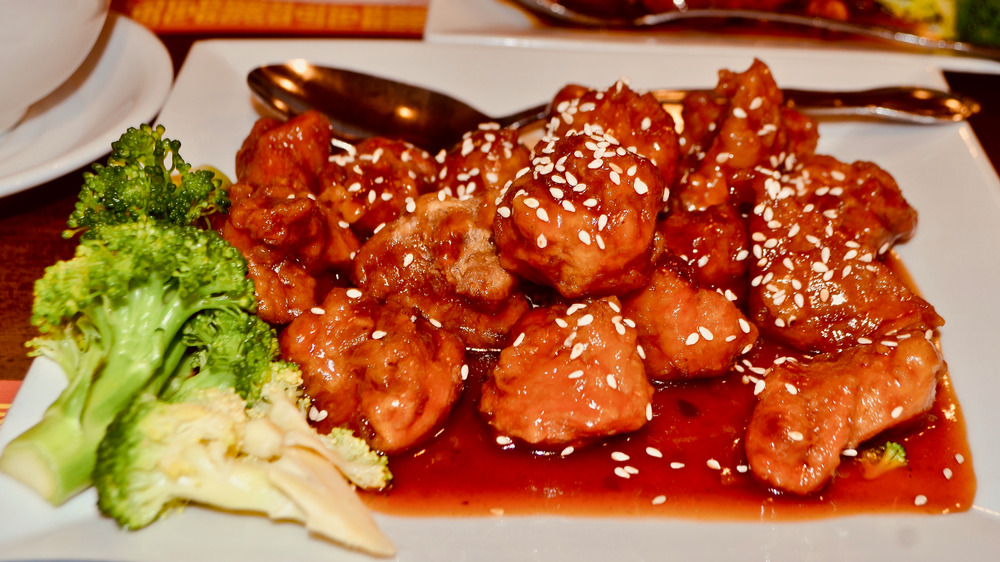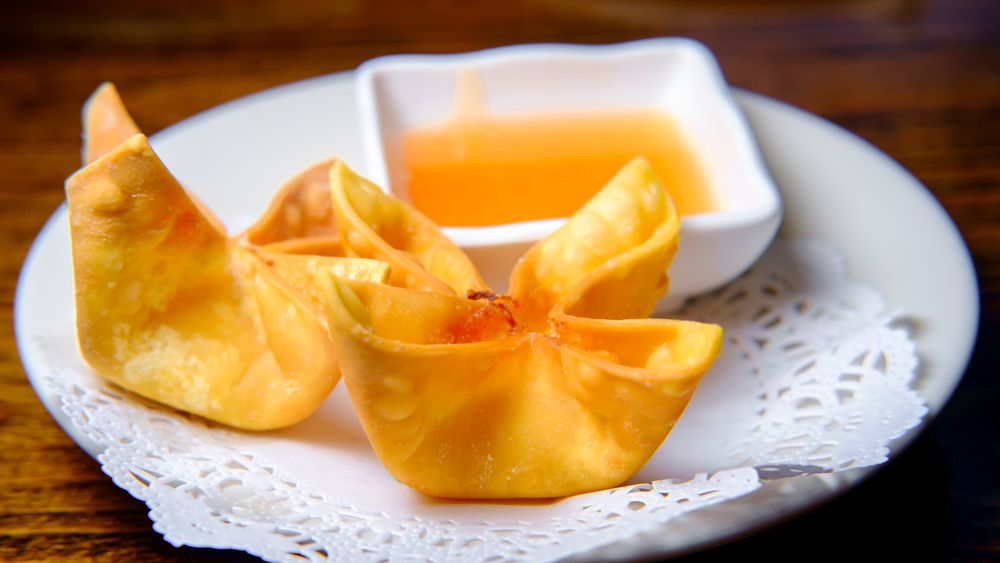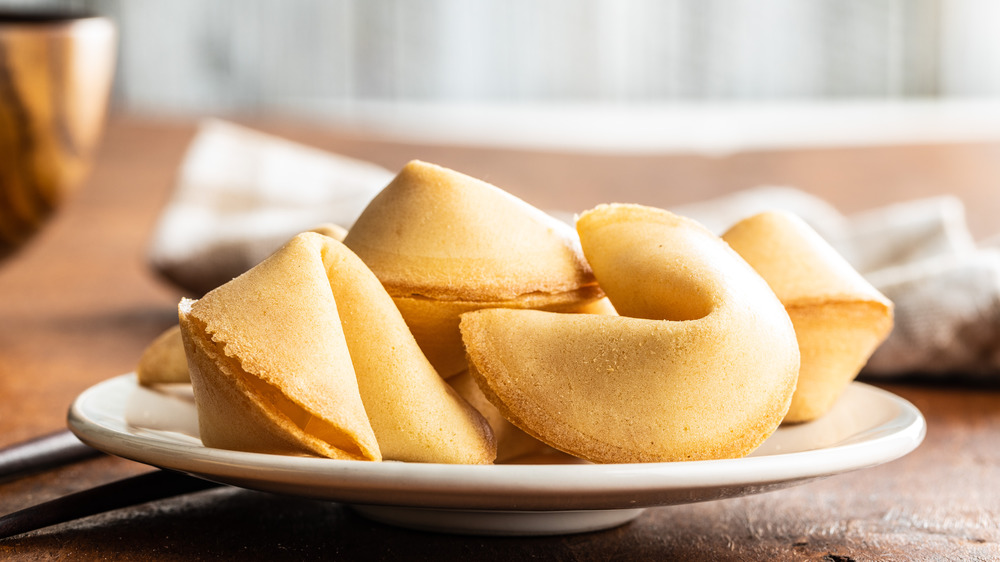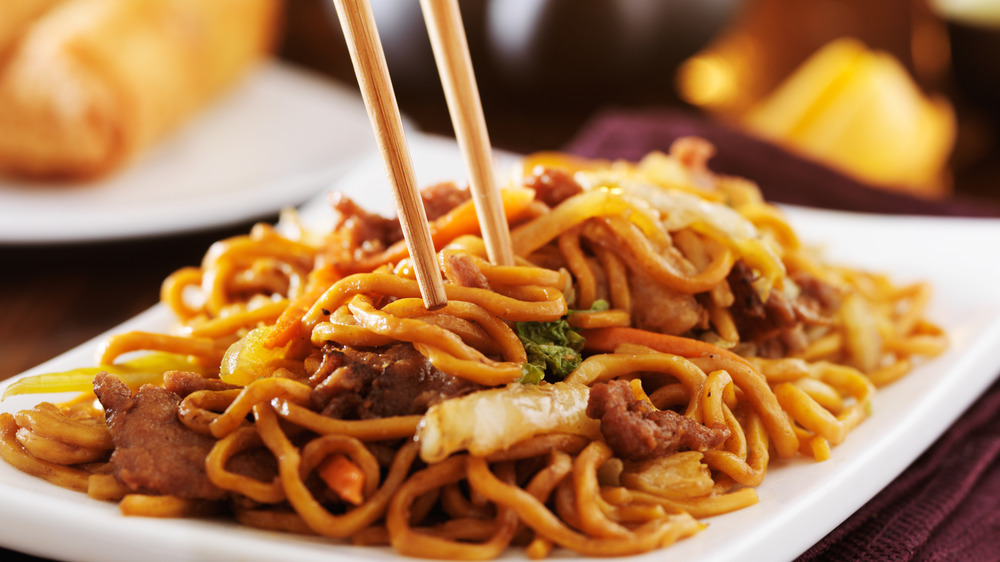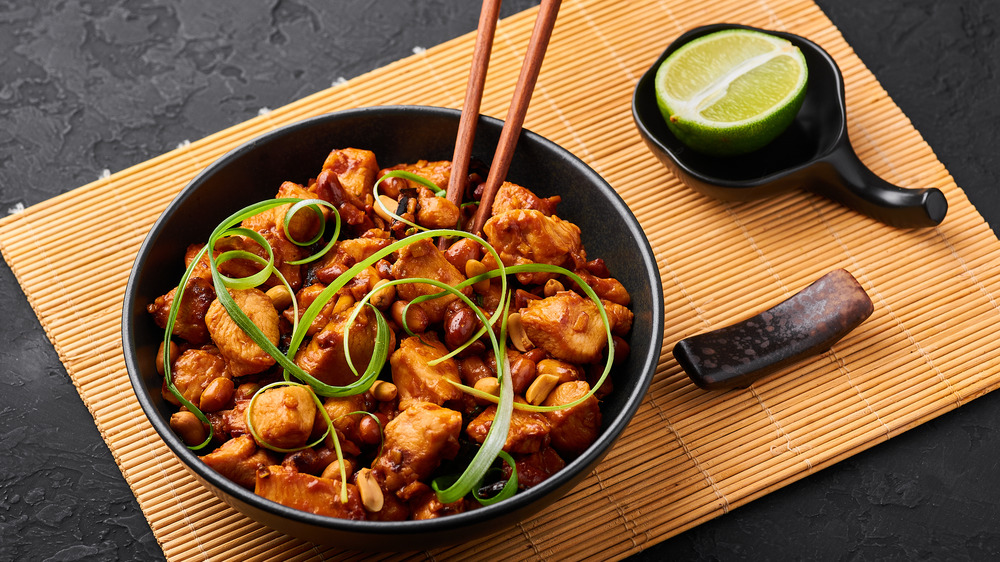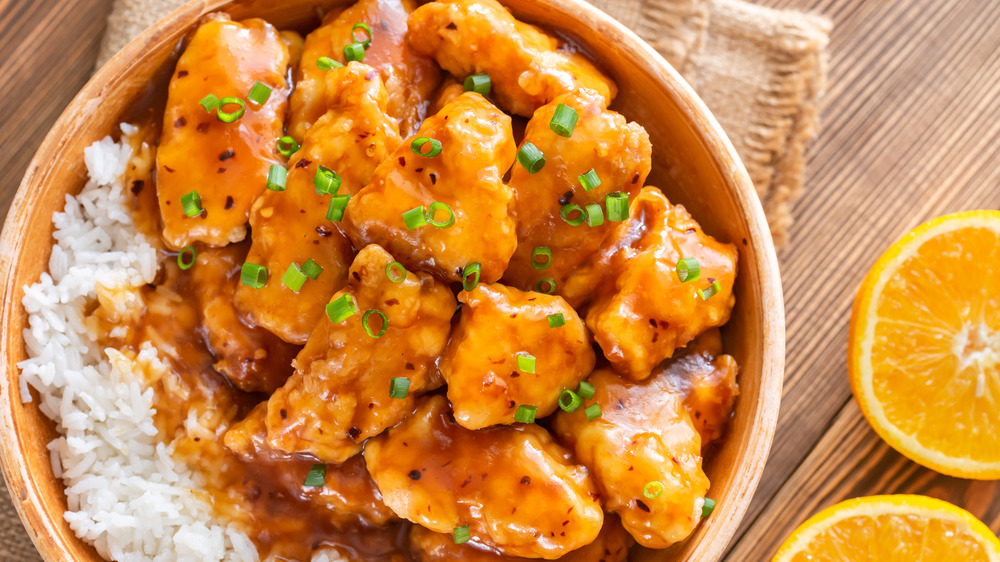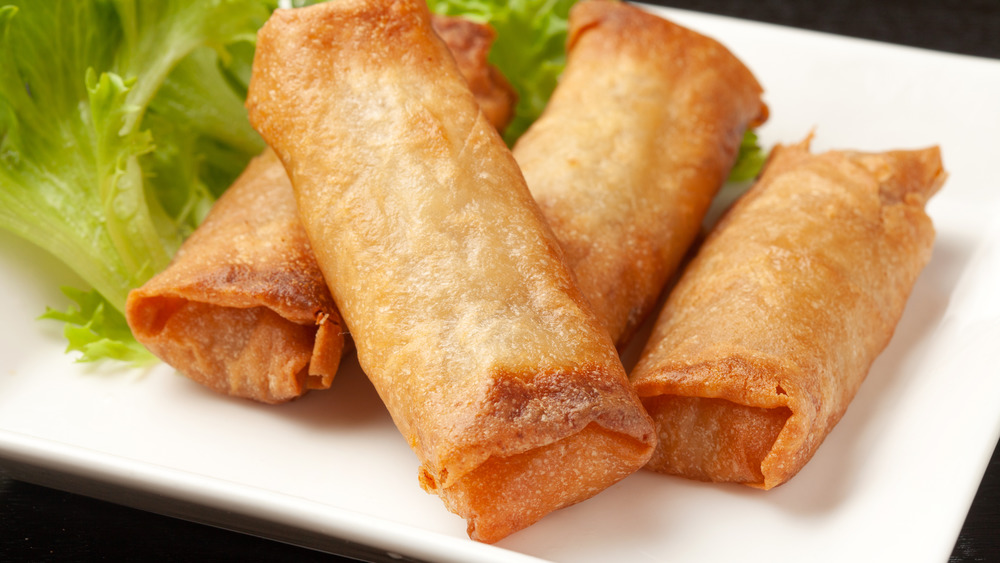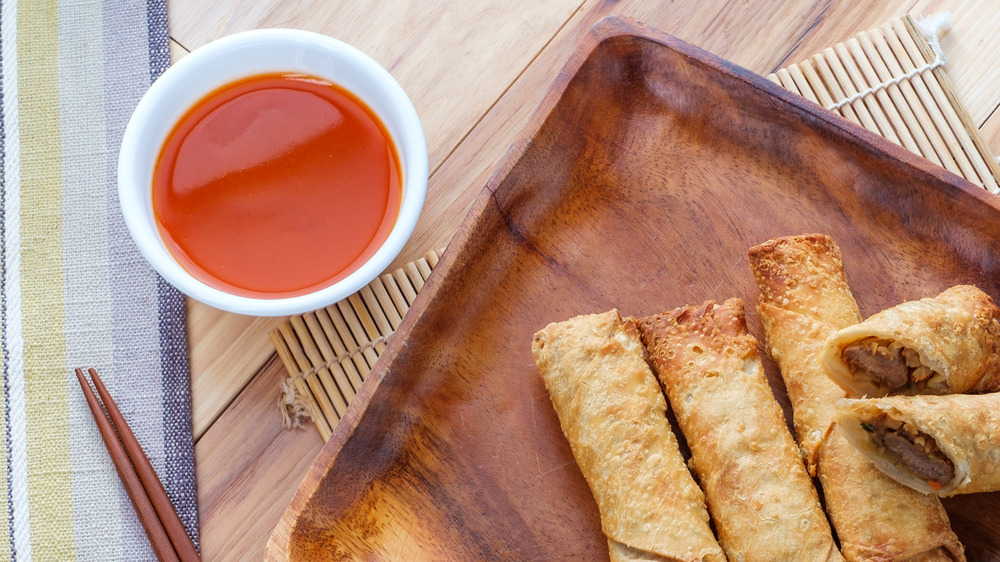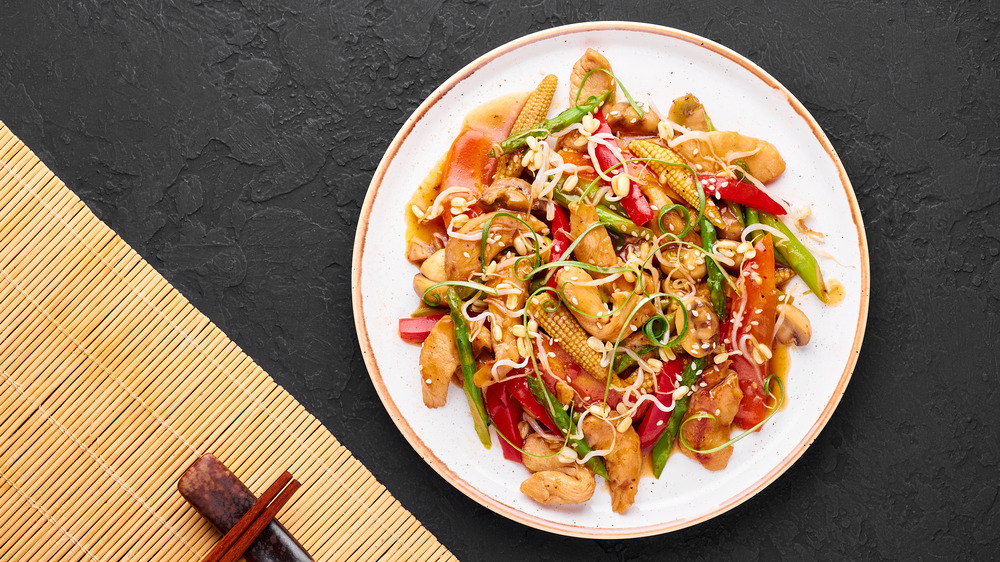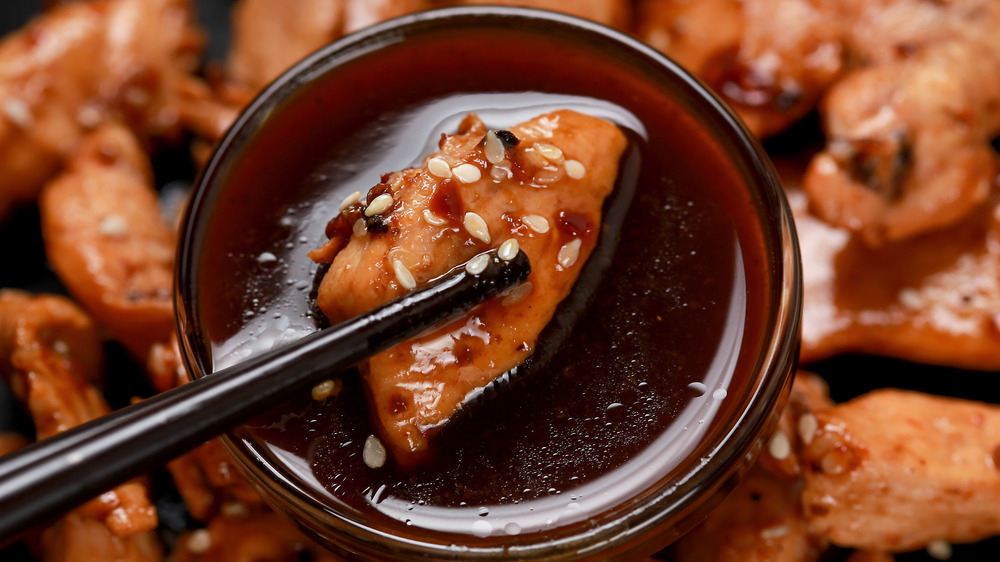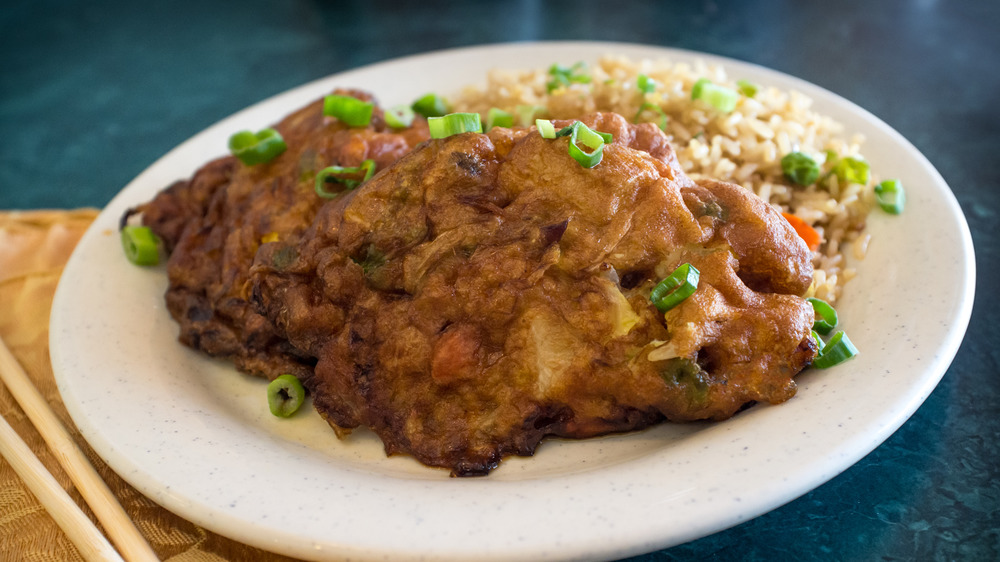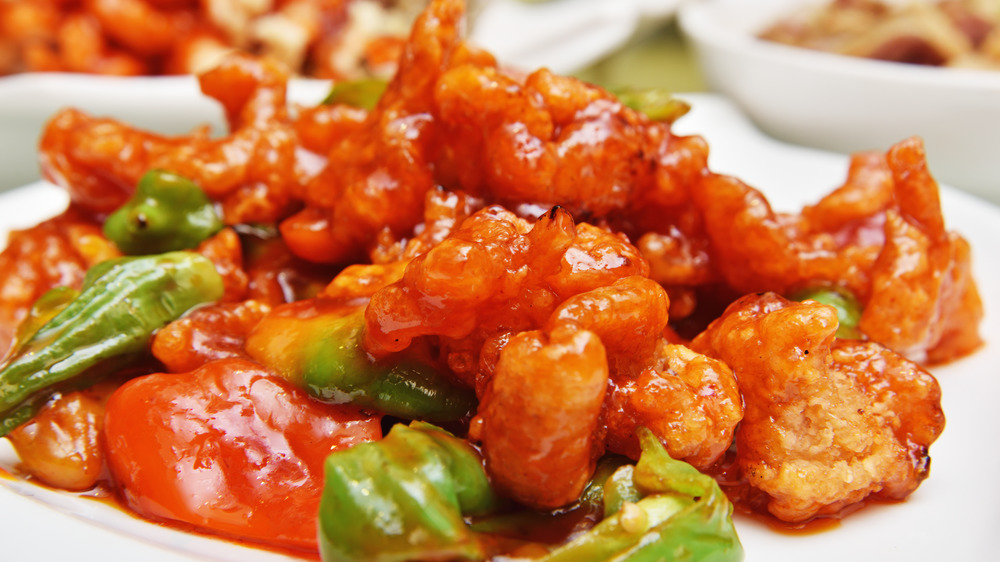Chinese Food You Won't Find In China
Let's be honest here. When you go through your mental hunger-fueled rolodex of possible food options, Chinese, many times, takes the cake. A culinary conundrum always finds an answer within hot containers of General Tso's chicken, pork fried rice, house special lo mein, and pan-fried dumplings. Don't forget the egg roll, of course. It's an umami-packed punch to your mouth that leaves you with visions of fortune cookies gallivanting through your dreams during the food-induced coma that strikes soon after. But, that sauce-glazed smile plastered across your face as you drift away to Neverland on your La-Z-Boy is well deserved. Until next time, Hunan Kitchen.
Unfortunately, many of us will never travel all the way to China to experience their culture, so we rely on our local Chinese eateries to give us a fleeting taste of all the Orient has to offer. But, did you know if you found yourself at a restaurant in Hong Kong and asked for General Tso's Chicken they'd look at you puzzlingly? Same goes for many of the dishes that grace the menus of Chinese food spots in America. Most Chinese cuisine we know here in the states isn't at all what the natives eat, so don't let that menu from down the street fool you.
General Tso's chicken
There's only one decorated officer who can extinguish the plumes of hunger raging in your belly: General Tso. His one-man army swoops in with a thick savory glaze that coats those little deep-fried morsels of chicken bits. Its flavor profiles hit every part of the tongue perfectly. But, this is one general you won't find at the front lines of authentic Chinese cuisine.
The inventor of the dish — likely named after a nineteenth-century Hunanese general — was a chef named Peng Chang-kuei, who created it at a restaurant in Taiwan shortly after fleeing the communist takeover of China during 1949. However, the General Tso's chicken he cooked up was then altered by a New York City chef named Tsung Ting Wang after eating at Peng's restaurant in the '70s. Restaurateur Ed Schoenfeld explained the difference: "Chef Wang added a crispier batter to the chicken, and made the sauce sweet." Once Peng discovered his altered dish, he was not pleased. However, once realizing how popular the newly-renovated General Tso's chicken was, he too catered to American palates. He said, "The original General Tso's chicken was Hunanese in taste and made without sugar. But when I began cooking for non-Hunanese people in the United States, I altered the recipe."
Crab rangoon
It's a weird combination of flavors: crab (sometimes imitation crab) and cream cheese. The idea of those two foods coming together to make one heck of a bomb appetizer seems ridiculous, but alas, it works wonders. Once you nestle that two-ingredient mixture in a wonton wrapper and deep fry it, it acts as a perfect median between all-out hunger and a main course. But, this unusual concoction of flavors didn't start in the hot kitchens of Chinese restaurants. In fact, its roots are deeply ingrained in tiki culture, and it was a man named Victor Bergeron who blessed us with the "Chinese" favorite.
Bergeron was the founder of Trader Vic's tiki bars, which was actually an inspiration for Trader Joe's supermarkets years later. During the '40s, he capitalized on a food that was quickly gaining popularity in American culture — cream cheese. Through a type of cuisine cross-pollination, crab rangoon was born. Americans were enamored with tropical flavors, and the incorporation of crab, along with the uber-popularity of cream cheese at the time, made for a bizarre but intriguing food so many of us now tack onto our Chinese food orders.
Fortune cookies
It's the best (albeit most un-delicious) part of every Chinese food meal: The fortune cookie! How could you end an hearty "authentic" meal from China without a small slip of literature informing you about what the future holds and the lucky numbers you should play for the next Powerball lottery? Sometimes you discover good luck is in your near future, and other times you realize your good karma's in need of accruing. As much as we Americans love cracking open those folded crisps, just know our friends in China aren't blessed with those clairvoyant strips of paper piled into every order we receive from Panda Express.
So, where exactly did this custom originate? It's been a heated debate, but it seems that Japan is the homeland. Author and New York Times reporter Jennifer 8. Lee took a deep dive into the subject, and an interview with food scholar Yasuko Nakamachi shed light on everything. After spending years traveling throughout Japan in an attempt to trace the history of these iconic cookies, she found the city of Kyoto to hold the inspiration (via Eat This, Not That!). Crackers called "tsujiura senbei" — or "omikuji senbei" — held small slips of paper containing poetic writings. However, they were much larger than American fortune cookies and made with sesame and miso as opposed to vanilla.
Lo mein
Lo mein. It's perhaps the most popular go-to noodle dish when it comes to Chinese food. If you want to complement some rice and protein, a pint of these noodles works wonders. They pair well with turf and surf. And, lo mein is a popular dish in China, so go ahead and order it after you snap all your selfies on top of the Great Wall. However, the noodles you're ordering overseas only resemble the stuff you're used to shoveling into your face on your couch here in America, so don't look shocked when you server places something in front of you that doesn't look familiar (you're in another country, after all).
The name "lo mein" hits the dish exactly on the nose: "stirred noodles." The American version of lo mein does share some features with the Chinese staple, such as egg noodles made from fresh wheat tossed into a sizzling wok alongside an array of meat and vegetables. However, the sauce is where the major difference comes about. Americans enjoy a heavy saturated-fat filled brown sauce (thanks to "sesame oil, rice wine, chicken broth, soy sauce, hoisin, ginger, oyster sauce and a thickener like cornstarch"), whereas the authentic stuff from China is much thinner, using only soy, rice vinegar, and a dash of the cornstarch. Plus, the veggies overseas consist mainly of bok choy, mushrooms, and cabbage.
Kung pao chicken
The name "gong bao ji ding" probably doesn't ring a bell to an American sitting at home navigating their local Chinese food menu. But, most of us are probably more familiar with it than we know. Any time you order up some kung pao chicken you're dabbling in that dish, but the history behind its emergence in the states is fascinating. And, according to food enthusiast and author Andrew Coe, it all had to do with Richard Nixon.
In February of 1972, Nixon visited China, which was a big deal seeing as he was the first American head-of-state to travel there since the formation of the People's Republic. The lavish welcoming banquet was telecast live in the United States, and people everywhere soon wanted to indulge in authentic Chinese cuisine. However, due to a law created in 1968 banning the importation of potentially harmful fungal-growing Sichuan peppers, the dish was made using bell peppers and a gloppy sweet sauce. The ban on the Sichuan peppers was lifted in 2005, but by then, the modified and over-saturated kung pao chicken dish in America had already taken off.
Orange chicken
Shame on anyone who ate at their local mall's Panda Express and left feeling as though they experienced the true taste of China. They didn't. Not even close. But, let's be clear about one thing: It was darn tasty, and they'd happily return for another helping as soon as the opportunity presented itself. And, it always did. One of the items on the Panda Express menu is Orange Chicken, and those little nuggets of chicken coated in a sweet orange glaze have stolen our hearts. The only thing is that the genesis of Orange Chicken lies solely in the depths of Panda Express kitchens.
Chef Jimmy Wang, who works out of the chain restaurant's "innovation kitchen," said, "Orange chicken is probably one of the most genius creations in the past 30 years. It's taking everything that we love — crispy fried chicken, tossed with savory sweet and sour sauce that really hits all the senses and taste buds in your mouth." Panda Express' executive chef Andy Kao is credited as the dish's inventor, having first presented it to hungry patrons in 1987. Once people took their first bite of it, orange chicken cemented itself in the pantheon of American-Chinese cuisine from then on.
Egg rolls
You'd be hard-pressed to find a meal on a Chinese food menu here in America that didn't come with a deep-fried log chock-full of veggies and, funny enough, no eggs in sight. (The name possibly comes from a Chinese-American cookbook published in 1917 that describes meat and veggies wrapped in egg.) These golden cylinders of goodness resemble the snacks dim sum chefs in Hong Kong call spring rolls, but the ingredients within their crispy casings are much different.
According to food writer Andrew Coe, egg rolls found their footing at some point during the 1930s in New York. One chef who claimed dominance over the item was Henry Low. In his 1938 cookbook, his egg roll recipe included "bamboo shoots, roast pork, shrimp, scallions, water chestnuts, salt, MSG, sugar, and pepper." As you can see, eggs aren't given a role at all. The beauty of egg rolls is that you can pretty much throw whatever ingredients you want into them and they'll play amazingly on the palate. Everyone loves a handheld vessel of unctuousness. Just don't expect to see it on a menu in China.
Duck sauce
Eek! A sauce made from ... duck? The name clearly implies this, but fret not concerned diner; no ducks were harmed — or even used — in the making of this thick sweet sauce served in clear packets with every Chinese dish you order in America. The origin of duck sauce is one clouded in mystery, although there are some theories. However, none of them have roots in China (are you really that surprised?).
Patricia T. O'Connor and Stewart Kellerman, two authors who run Grammarphobia.com, devote their time debunking myths about English grammar. Although the water is murky, they firmly believe the origin of duck sauce, along with the name, is solely American. They claim it all started with Peking duck, an authentic Chinese dish, and a dipping sauce made from wheat flour and soybeans served alongside it. When Chinese immigrants came to America and were forced to cater to different palates, they created a sweeter substitute using apricots (via Smithsonian Magazine). Peking duck might come straight outta China, but duck sauce is straight outta America.
Chop suey
Fans of hardcore music might know these two words as the name of a popular System of a Down song, but those lyrics have nothing to do with perhaps one of the most familiar dishes on Chinese food takeout menus. In fact, the dish as a whole has very little to do with anything served in China. And, a look into the origin stories behind the classic dish are as interesting as the meal is delicious.
One culinary tale tells of a Chinese diplomat named Li Hongzhan, who visited New York City in 1896 (via Food & Wine). He played host to a large group of Americans, and he asked his chef to prepare something of Chinese origins that would also cater to American taste. The answer was chop suey (based on a Cantonese dish called "tsap seui" that translates to "miscellaneous leftovers"). However, that's just one theory. Another origin story tells of a Chinese restaurant in San Francisco that served up the "miscellaneous" dish to drunk miners during the Gold Rush. They demanded food after a long day's work, and the chef, too tired to cook something new, gathered the scraps off previous customers' plates to create ... chop suey!
Regardless of where chop suey came from, it certainly didn't get its start in China, so don't go looking for it if you visit.
Sesame chicken
It's natural to think of the word "sesame" as synonymous with Chinese cuisine. After all, sesame seeds are found in plenty of Chinese dishes, so of course sesame chicken is an authentic dish from our eastern Asian comrades, right? As it turns out, not at all! If you're trying to hunt down a dish that's similar while trotting around China, you'll likely settle on something called "la zi ji."
La Zi Ji is an authentic Sichuan dish comprised of "fried chicken breasts, peppercorns, toasted sesame oil, and chilis." It's nowhere near as rich and unhealthy as the Americanized version that nestles it's fried chicken chunks in a thick sweet sauce. While sesame chicken in the states has a slight kick of heat to it, the authentic stuff packs way more of a punch. The Sichuan province is known for the intense heat many of its dishes carry, and the flavors wouldn't exactly cater well to an American palate unaccustomed to such peppery ferocity. It's still a fan favorite, though, so order up as much sesame chicken as your little heart desires.
Egg foo yong
When you think of pancakes, images of fluffy Bisquick disks come to mind. And, why wouldn't they? Those are the pancakes Americans know and love. However, when it comes to Americanized Chinese food, pancakes take on a whole different meaning. They include vegetables and bits of minced meat, all held together by a binding ingredient (egg). Egg foo yong got its start at small hole-in-the-wall Chinese restaurants called "chow-chows" started by immigrants from Canton during the California Gold Rush over a century ago. They knew Americans were suspicious of foreign flavors and ingredients, so they created a dish that turned the tables on that suspicion.
By putting a mess of unusual ingredients into a fried pancake-shaped disk, Americans were far more likely to give them a try. During World War II, when China became an ally to the United States, the cuisine was suddenly glamorized, and it seemed like everyone wanted to indulge in the new cuisine. The food quickly spread across the country, with places like New York City becoming "hotbeds of Asian culture." People couldn't get enough of the Chinese flavors, and egg foo yong landed on every menu.
Sweet and sour pork
The combination of sweet and sour makes for a great sauce that's heavily ladled onto this pork dish. However, the sweet and sour pork we Americans know and love isn't the same stuff served overseas. For starters, sweet and sour sauce isn't traditionally served with pork. It's actually paired with seafood as a dipping condiment. A much more pungent sauce, such as hoisin or bean paste, is what normally accompanies pork. Also, ketchup (or tomato paste) is usually an ingredient in American sweet and sour sauce, but tomatoes aren't native to China, which makes their version much different.
In an excerpt from his book Food in China, author Frederick J. Simoons explains that there's been a debate over whether the sweet and sour flavor of the dish originated in Honan or elsewhere in the country. The sauce which is made with vinegar and sugar, is generally seen as "lacking in refinement" by Cantonese cooking traditionalists. As Simoons points out, some Cantonese even look down on the dish: "They, like other Chinese, are amused at the popularity among Westerners of pork and chicken prepared this way; in fact, some Cantonese are now rejecting sweet-and-sour pork 'because it is so thoroughly linked with the barbarians'."

